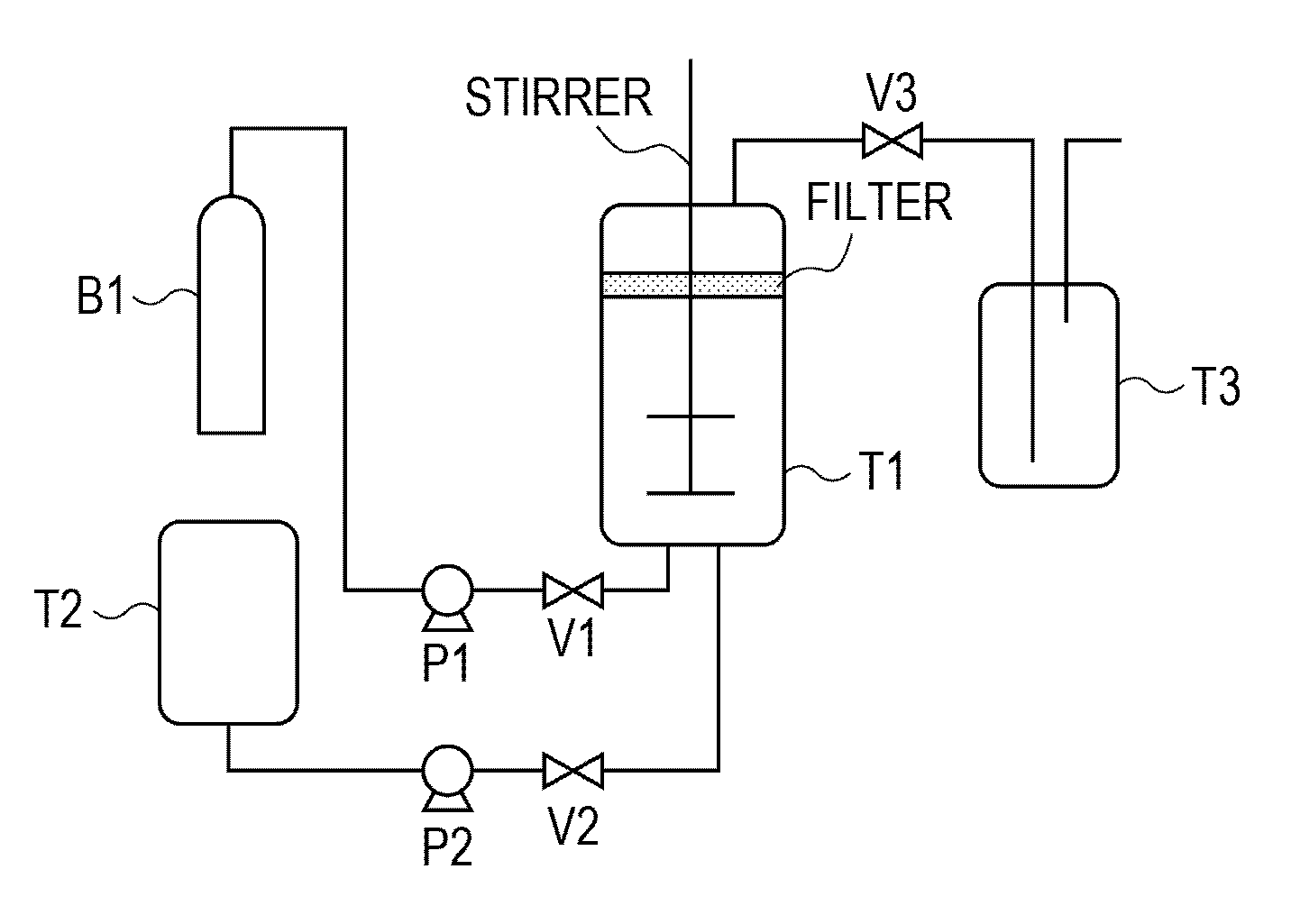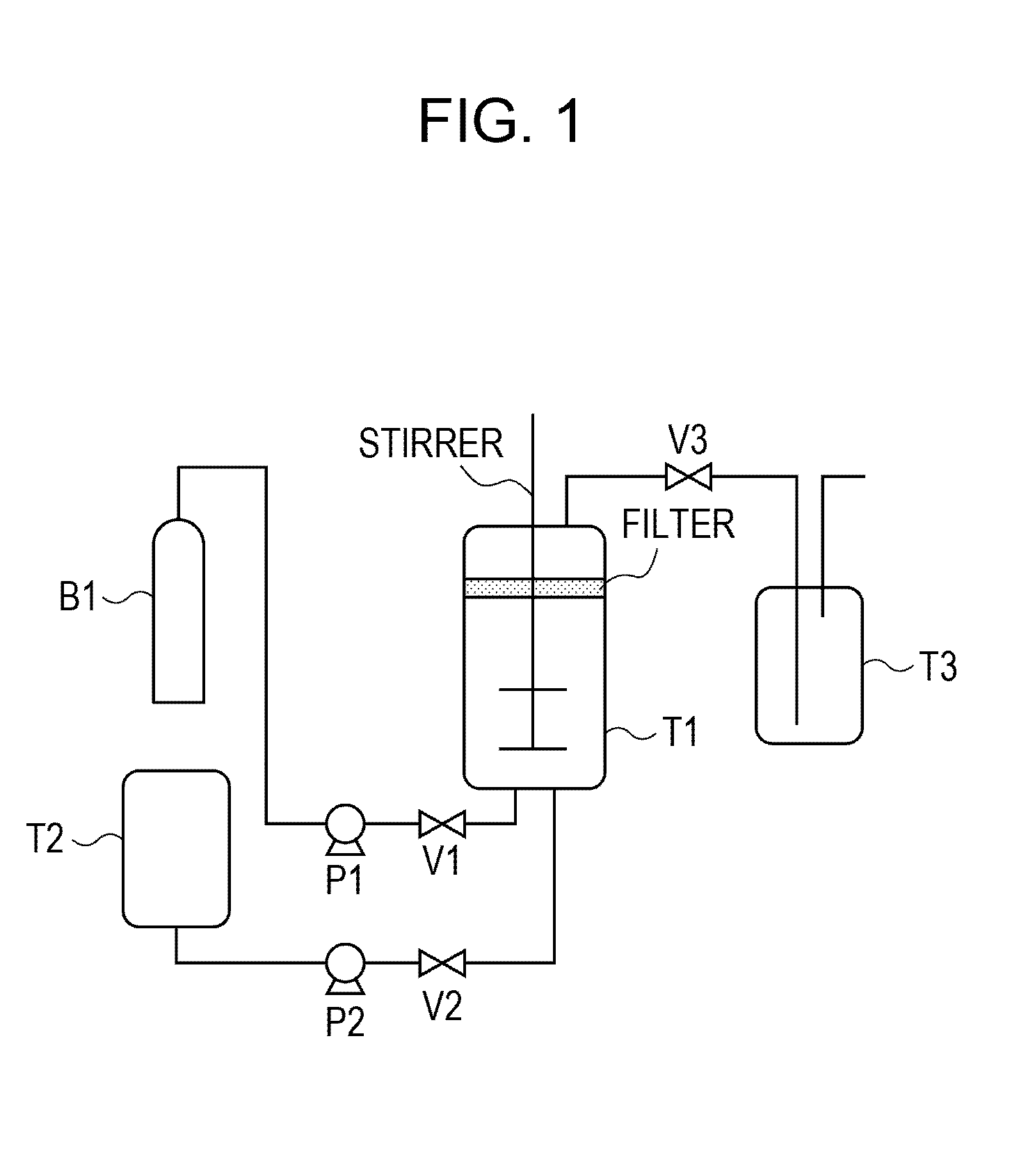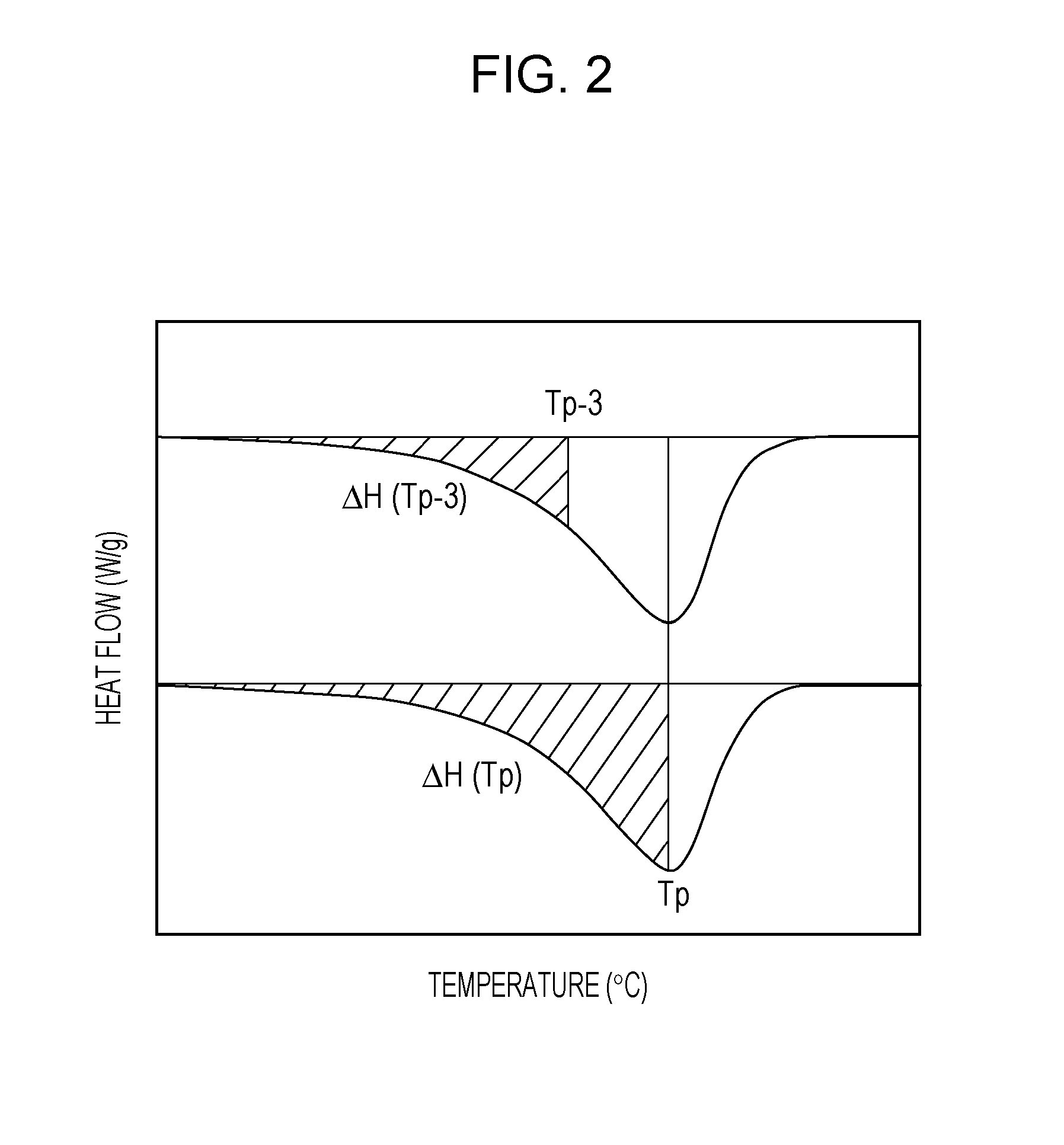Toner
a technology of toner and spherical paper, which is applied in the field of toner, can solve the problems of reducing the heat quantity required in the fixing device, the impact of energy saving, and the decrease of the thermal storage resistance, and achieves excellent thermal storage resistance and long-term storage stability, excellent sharp melting properties, and low temperature fixability
- Summary
- Abstract
- Description
- Claims
- Application Information
AI Technical Summary
Benefits of technology
Problems solved by technology
Method used
Image
Examples
example 1
Production of Toner Particles (Before Treatment)
[0218]In the experimental apparatus shown in FIG. 1, valves V1 and V2 and a pressure-controlling valve 3 were closed. The resin fine particle dispersion liquid 1 was put into a pressure-resistant granulation tank T1 including a stirring mechanism and a filter for filtering toner particles. The internal temperature was adjusted to 30° C. Subsequently, the valve V1 was opened to introduce carbon dioxide (purity: 99.99%) to the pressure-resistant granulation tank T1 from a cylinder B1 using a pump P1. When the internal pressure reached 5 MPa, the valve V1 was closed.
[0219]The block polymer resin solution 1, the wax dispersion liquid 1, the coloring agent dispersion liquid 1, and acetone were put into a resin solution tank T2, and the internal temperature was adjusted to 30° C.
[0220]The valve V2 was then opened to introduce the contents of the resin solution tank T2 to the granulation tank T1 using a pump P2 while the inside of the granula...
examples 2 to 17 and 19
[0240]Toners 2 to 17 and 19 were produced in the same manner as in Example 1, except that the types of resins used and the annealing conditions were changed to those shown in Table 4. Table 5 shows the physical properties of the resultant toners. Table 6 shows the results of the same evaluation as that conducted in Example 1.
[0241]In the endothermic curve of the toners 5 and 9, the maximum endothermic peak overlapped the endothermic peak derived from the wax. Therefore, in the analysis, the endothermic amount derived from the wax was subtracted from the maximum endothermic peak.
example 18
[0242]Toner particles (before treatment) 18 were produced in the same manner as in Example 1, except that the amount of each component in the production process of the toner particles (before treatment) 1 was changed to be as follows.
crystalline polyester resin solution 1112.0 parts by massamorphous resin solution 1 48.0 parts by masswax dispersion liquid 1 62.5 parts by masscoloring agent dispersion liquid 1 25.0 parts by massacetone 35.0 parts by massresin fine particle dispersion liquid 1 25.0 parts by masscarbon dioxide320.0 parts by mass
[0243]The resultant toner particles (before treatment) 18 were subjected to DSC measurement. The peak temperature of the maximum endothermic peak was 65° C.
[0244]A toner 18 was produced by performing an annealing treatment on the resultant toner particles (before treatment) 18 in the same manner as in Example 1, except that the annealing temperature was changed to 58° C.
[0245]Table 5 shows the physical properties of the resultant toner. Table 6 ...
PUM
| Property | Measurement | Unit |
|---|---|---|
| Temperature | aaaaa | aaaaa |
| Temperature | aaaaa | aaaaa |
| Temperature | aaaaa | aaaaa |
Abstract
Description
Claims
Application Information
 Login to View More
Login to View More - R&D
- Intellectual Property
- Life Sciences
- Materials
- Tech Scout
- Unparalleled Data Quality
- Higher Quality Content
- 60% Fewer Hallucinations
Browse by: Latest US Patents, China's latest patents, Technical Efficacy Thesaurus, Application Domain, Technology Topic, Popular Technical Reports.
© 2025 PatSnap. All rights reserved.Legal|Privacy policy|Modern Slavery Act Transparency Statement|Sitemap|About US| Contact US: help@patsnap.com



